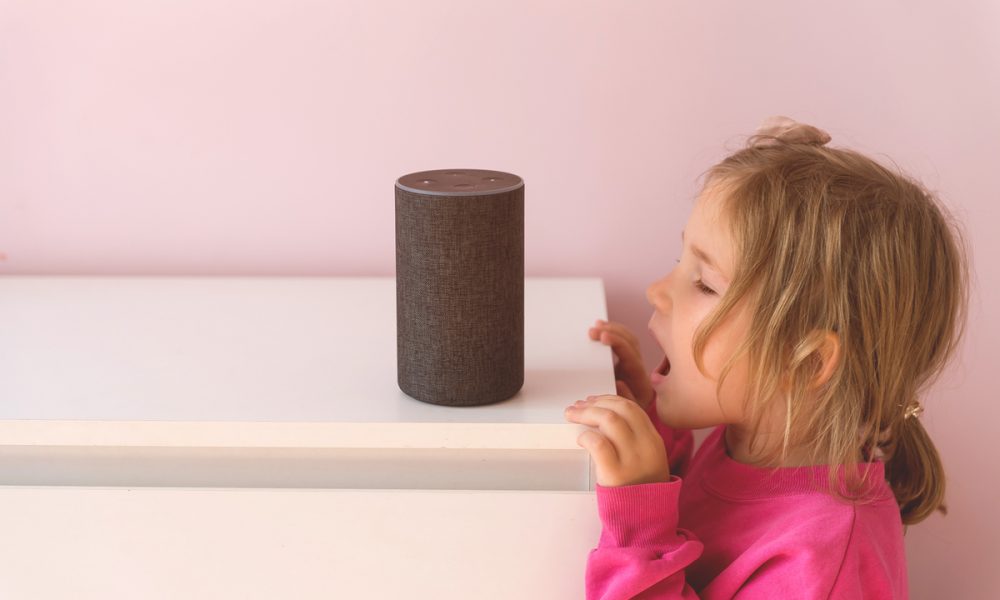Would it have been more successful had it been called “Finch,” “Friday” or “Samantha?”
That’s something to contemplate as we mark the 7th birthday of Amazon’s Alexa voice assistant. Those were some of the names being thrown around in brainstorming, according to Brad Stone’s 2021 book, “Amazon Unbound: Jeff Bezos and the Invention of a Global Empire.”
As Stone told WBUR Boston, “The idea for Alexa comes from Bezos, late 2010, and he is looking for a way to take advantage of Amazon’s advantage in the cloud… He’s a big science fiction fan. He thinks that the future of computing might be a voice.”
Bezos was right about voice playing a central role in how people interact with computers, with Alexa-enabled devices now enjoying a dominant share of the U.S. smart speaker market at 69%, according to GeekWire reporting, estimating Google at 25% and Apple at about 5%.
So concerned was Bezos with the name of his voice interface that project engineers reportedly felt it he was micromanaging the process. That hints at the importance the retail tech visionary attached to Alexa, which, at just 7 years of age, plays a vast role in the connected economy.
As PYMNTS’ Karen Webster recently wrote, “Seven years ago, Alexa 1.0 was about building the consumer’s trust using a humanized voice [artificial intelligence (AI)] application named Alexa, and discovering the hands-free power of a simple, spoken command to master the mundane. Over time, its voice AI operating system has the potential to move consumers and businesses closer to an always-on connected commerce ecosystem.”
Read more: Voice Operating Systems Like Alexa Will Power the Connected Economy
New Connected Use Cases and a Mystery Revealed
Until Stone’s exposé, the source of Alexa’s soothing lilt was considered an Amazon trade secret. The book informs us that when we say “Alexa, what’s the temperature?” the voice responding belongs to voice actress Nina Rolle. Officially, Amazon will neither confirm nor deny.
Whomever the voice belongs to, Alexa has made itself heard and graduated from basic voice assistant to be more akin to an operating system for the connected economy.
As Webster wrote, “Alexa and voice AI is to the connected economy what Microsoft was to the PC in 1990 and what iOS and Android were to smartphones in 2008: the operating system that will help it scale.”
And scaling it is. As previously noted, Alexa’s installed base dwarfs that of its two closest Big Tech competitors, and Amazon has plans to bring even more connectedness to this ecosystem.
Announcing its third-quarter results on Oct. 28, Amazon teased a new subscription service called Alexa Together. Currently waitlisting subscribers ahead of a launch during the first quarter next year, the service is “designed to help aging family members feel more comfortable and confident when living independently.” It includes 24/7 hands-free access to an emergency helpline, compatibility with third-party devices that detect falls, and an optional Remote Assist feature for caregivers.
Also unveiled at that event was Astro — think of it as Alexa in the form of a robot dog — with the ability to process many Alexa home voice commands while monitoring connected home devices, including Ring doorbell cameras, while rolling around playing music and a good deal more.
As PYMNTS found in the study How Consumers Live in a Connected Economy, Amazon tops the list of companies — including banks — consumers trust most with their data and payments credentials.
Get the study: How Consumers Live In a Connected Economy
That study noted that “among ‘super-connected’ consumers — those that own at least six connected devices — and bridge millennials … the most trusted connected commerce enablers among super-connected consumers are Amazon (53%), Visa (46%), PayPal (44%), Apple (41%) and primary banks (35%).”
Those numbers say a lot about Alexa’s role as a connected economy enabler going forward.







